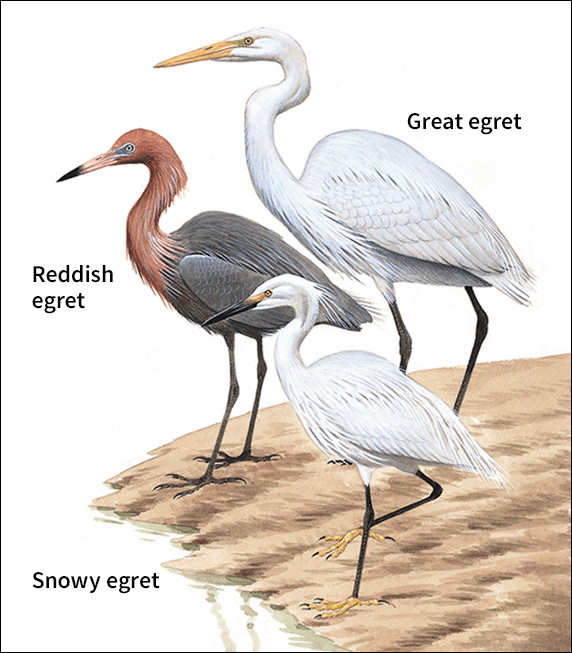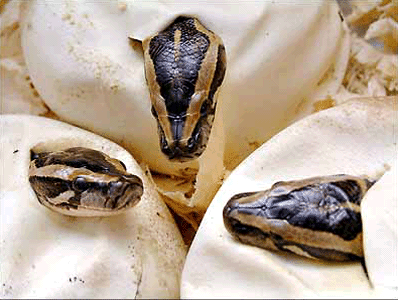Everglades Birds Latest Target of Ravenous Pythons
April 9, 2012
After devastating the mammal population of Everglades National Park in Florida, Burmese pythons are targeting the park’s birds. They are not only eating area birds but also taking their eggs straight from the nest.
Researchers from the Smithsonian Museum of Natural History have monitored the invasive snake’s diet by examining the stomach contents of captured pythons. They found that the diets of some 300 captured snakes consisted of more than 25 species of birds. They also found eggs inside the snakes, proof that they are attacking nests. Most snakes that eat eggs puncture the shells with fangs and suck out the contents. However, the researchers found shell fragments inside the snakes, suggesting that they eat the eggs whole. “This finding is significant because it suggests that the Burmese python is not simply a sit-and-wait predator, but rather is opportunistic enough to find the nests of birds,” noted Carla Dove, a researcher with the Smithsonian study. “Although the sample size is small, these findings suggest that the snakes have the potential to negatively affect the breeding success of native birds.” The study was reported in the March 2012 issue of the journal Reptiles & Amphibians: Conservation and Natural History.
An earlier study, published in March 2012 by two Florida university researchers, revealed that pythons were battling alligators for the position of top predator in the Everglades. That study was the first to provide evidence linking a sharp decline in populations of medium- and large-sized mammals in the park to an explosion in the number and range of the large snakes.

Egrets are among the most beautiful birds in the Everglades. (World Book illustration by Trevor Boyer, Linden Artists Ltd.)
Native to Southeast Asia, the Burmese python is classified as an invasive species in North America. From 1999 to 2004, pet exporters met a growing American demand for Burmese pythons by shipping more than 144,000 baby snakes to the United States. However, new owners were frequently unprepared or unwilling to care for the grown snakes, which can measure 23 feet (7 meters) in length and weigh 200 pounds (91 kilograms). Many owners dumped their snakes into the wild. Pythons released into the Florida Everglades, a region with a climate similar to that of the snakes’ native habitat, flourished. Pythons also have escaped into the wild during hurricanes.
Researchers surveyed native mammal populations over 313 nights during an eight-year period by counting live and dead animals along a road that runs to the southern tip of the park. They then compared their tallies to population surveys done in 1996 and 1997. In areas of the Everglades where pythons have lived the longest, populations of raccoons had fallen by 99.3 percent. The number of opossums had dropped by 98.9 percent, and bobcat populations had fallen by 88.5 percent. The researchers were unable to find any rabbits or foxes. Populations of native animals were larger in areas more recently or not yet invaded by the snakes.
The U.S. Association of Reptile Keepers disputed the findings of the study. The organization contended that mercury pollution in the Everglades has played a major role in the disappearance of the mammals.

Young Indian pythons hatch from eggs outside the mother's body. (AP/Wide World)
Wildlife experts agree that eliminating the secretive and hard-to-hunt snakes from the park would be impossible. They are unsure if the spread of the snakes, which have no natural predators in North America, can be halted. In January, the federal government outlawed the import and interstate commerce of Burmese pythons, two other pythons, and the yellow anaconda. Reptile importers are still allowed to trade in reticulated pythons and boa constrictors.
Additional World Book articles:
- Ecology
- Invasive Species (A Special Report)
- Reptile


